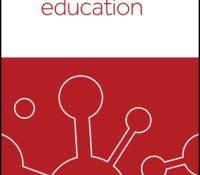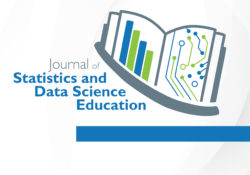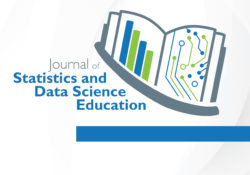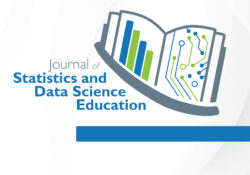tandfonline.com har udgivet en rapport under søgningen “Teacher Education Mathematics”: Abstract Formulae display:?Mathematical formulae have been encoded as MathML and are displayed in this HTML version using MathJax in order to improve their display. Uncheck the box to turn MathJax off. This feature requires Javascript. Click on a formula to zoom. Abstract Reflecting growing emphasis on data analysis and statistical thinking in the information age, mathematics curriculum standards in the U.S. have recently increased expectations for student learning in the domain of statistics and probability. More than 180 teachers in 36 public school districts in Florida applied for a two-week summer institute designed to increase teachers’ content and pedagogical content knowledge in statistics and probability. Individual teachers were assigned at random to a treatment or business-as-usual comparison group. The two-week… Continue Reading →
Like this:
Like Loading...
eric.ed.gov har udgivet: Considerable research has examined interventions that facilitate school readiness skills in young children. One intervention, “Red Light, Purple Light Circle Time Games” (RLPL; Tominey and McClelland, 2011; Schmitt et al., 2015), includes music and movement games that aim to foster self-regulation skills. The present study (N = 157) focused on children from families with low-income and compared the RLPL intervention (SR) to a revised version of RLPL that included literacy and math content (SR+) and a Business-As-Usual (BAU) control group. In both versions of the intervention, teachers were trained to administer the self-regulation intervention in preschool classrooms with coaching support. Although not statistically significant, children receiving either version of the intervention gained more in self-regulation on the Head-Toes-Knees-Shoulders (HTKS) over the preschool year compared to the BAU… Continue Reading →
Like this:
Like Loading...
eric.ed.gov har udgivet: The Public Broadcasting Service (PBS) sought to build on the strengths of high quality professional development through an online venture funded under the U.S. Department of Education’s Ready To Teach (RTT) program. PBS TeacherLine was designed to provide high-quality, facilitated online professional development for K-12 teachers nationwide. Through PBS TeacherLine, more than 20,000 educators have participated in 90 online, facilitated courses in reading, mathematics, science, instructional strategies, instructional technology, and curriculum mapping. To what extent has PBS TeacherLine been successful in creating an online model of teacher professional development that gets to the heart of education needs–impacting teacher beliefs, classroom instruction, and student learning? This paper presents the results from one component of the comprehensive external evaluation of PBS TeacherLine: an experimental study that unfolded in the… Continue Reading →
Like this:
Like Loading...
eric.ed.gov har udgivet: The current study, a randomized controlled trial, explores how technology and educational transmedia resources can enhance prekindergarten math teaching and learning in preschools, especially those serving children who may be at risk for academic difficulties due to economic and social disadvantages. This research is part of a multi-year summative evaluation of the CPBPBS Ready To Learn initiative, funded by the US Department of Education. A core aim of the initiative is delivering early math (and literacy) resources on new and emerging digital platforms such as tablet computers, interactive whiteboards, and smartphones, as well as better-established technologies such as computers, video displays, and gaming consoles, and to create learning experiences that leverage the unique capabilities of these various technology platforms. The study’s goal was to understand how the… Continue Reading →
Like this:
Like Loading...
tandfonline.com har udgivet en rapport under søgningen “Teacher Education Mathematics”: ABSTRACT ABSTRACT Bar graphs and histograms are core statistical tools that are widely used in statistical practice and commonly taught in classrooms. Despite their importance and the instructional time devoted to them, many students demonstrate misunderstandings when asked to read and interpret bar graphs and histograms. Much of the research that has been conducted about these misunderstandings has been with students in introductory statistics classes at the college level. In this article, students in grades 6–12 completed multiple-choice and constructed-response questions about bar graphs and histograms as part of a larger study. The same misunderstandings that college-level students demonstrate were found in these younger students. Link til kilde
Like this:
Like Loading...
tandfonline.com har udgivet en rapport under søgningen “Teacher Education Mathematics”: ABSTRACT Formulae display:?Mathematical formulae have been encoded as MathML and are displayed in this HTML version using MathJax in order to improve their display. Uncheck the box to turn MathJax off. This feature requires Javascript. Click on a formula to zoom. ABSTRACT There has been a recent emergence of scholarship on the use of fun in the college statistics classroom, with at least 20 modalities identified. While there have been randomized experiments that suggest that fun can enhance student achievement or attitudes in statistics, these studies have generally been limited to one particular fun modality or have not been limited to the discipline of statistics. To address the efficacy of fun items in teaching statistics, a student-randomized experiment was designed… Continue Reading →
Like this:
Like Loading...
eric.ed.gov har udgivet: This evaluation reports findings from a study of a UCLA teacher education program called IMPACT, Inspiring Minds through a Professional Alliance of Community Teachers. To measure program quality and goal attainment, the evaluation team used a comprehensive, multiple measures approach which included instructional artifacts, classroom logs, measures of pedagogical content knowledge, performance assessments, and teaching attitudes and beliefs. The evaluation team found that math and science teacher apprentices who completed the IMPACT program generally had a positive opinion of the program and applied what they learned in the classroom to their teaching. However, the team also found that the program did not significantly increase the pedagogical content knowledge of teachers nor contribute to substantial changes in teacher instructional strategies across lessons. Differences found in the experience and… Continue Reading →
Like this:
Like Loading...
tandfonline.com har udgivet en rapport under søgningen “Teacher Education Mathematics”: ABSTRACT ABSTRACT The recent simulation-based inference (SBI) movement in algebra-based introductory statistics courses (Stat 101) has provided preliminary evidence of improved student conceptual understanding and retention. However, little is known about whether these positive effects are preferentially distributed across types of students entering the course. We consider how two metrics of Stat 101 student preparation (precourse performance on concept inventory and math ACT score) may or may not be associated with end of course student performance on conceptual inventories. Students across all preparation levels tended to show improvement in Stat 101, but more improvement was observed across all student preparation levels in early versions of a SBI course. Furthermore, students’ gains tended to be similar regardless of whether students entered… Continue Reading →
Like this:
Like Loading...
eric.ed.gov har udgivet: Grading is one of teachers’ greatest challenges and most important professional responsibilities. Educators are unclear on whether standards-based grades or traditional-based grades do a better job of accurately reflecting what students have learned, so the purpose of this study was to understand the relationship between classroom grades and scores on the Scholastic Math Inventory (SMI) assessment. The individuals were sixth-, seventh-, and eighth-grade mathematics students from five different middle schools in the same district as they took the SMI assessment. There were about 500 students in the standards-based grading system and about 1,900 students in the traditional grading system. Link til kilde
Like this:
Like Loading...
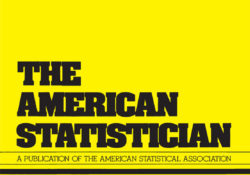
tandfonline.com har udgivet en rapport under søgningen “Teacher Education Mathematics”: Abstract Abstract The author has previously proposed results blind manuscript evaluation (RBME) as a method of ameliorating often cited problems of statistical inference and scientific publication, notably publication bias, overuse/misuse of null hypothesis significance testing (NHST), and irreproducibility of reported scientific results. In RBME, manuscripts submitted to scientific journals are assessed for suitability for publication without regard to their reported results. Criteria for publication are based exclusively on the substantive importance of the research question addressed in the study, conveyed in the Introduction section of the manuscript, and the quality of the methodology, as reported in the Methods section. Practically, this policy is implemented by a two stage process whereby the editor initially distributes only the Introduction and Methods sections… Continue Reading →
Like this:
Like Loading...
